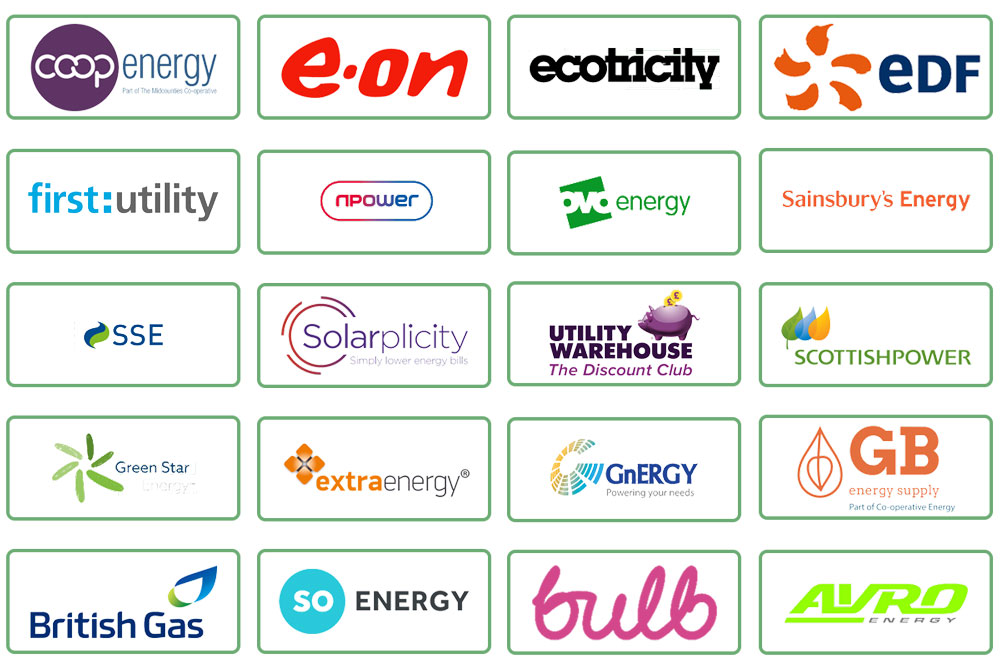
Other electric companies, beyond the traditional utilities, are shaping the future of energy. From renewable energy providers to innovative startups, the landscape is dynamic and diverse. These companies offer a range of options for consumers, from clean energy sources to advanced technologies that enhance efficiency and reliability.
Choosing the right electric company involves considering factors like pricing, reliability, environmental impact, and customer service. New business models and technologies are transforming the industry, creating opportunities for both consumers and companies.
The Landscape of Electric Companies

The electric company industry is undergoing a significant transformation, driven by factors such as climate change, technological advancements, and evolving consumer preferences. This dynamic landscape encompasses traditional utilities and emerging renewable energy providers, each with unique business models and strategies.
Major Players in the Electric Company Industry
The electric company industry is dominated by a mix of traditional utilities and emerging renewable energy providers.
- Traditional Utilities: These companies are typically vertically integrated, meaning they control all aspects of the electricity supply chain, from generation to transmission and distribution. Examples include:
- Exelon: One of the largest electric utilities in the US, operating nuclear, coal, and natural gas power plants.
- Duke Energy: Another major US utility, with a diverse portfolio of energy sources, including coal, natural gas, nuclear, and renewables.
- Southern Company: A major US utility with a focus on coal and natural gas generation, but also expanding its renewable energy portfolio.
- Renewable Energy Providers: These companies specialize in generating electricity from renewable sources, such as solar, wind, and hydropower. Examples include:
- NextEra Energy: The world’s largest producer of wind and solar energy, with a focus on utility-scale renewable energy projects.
- First Solar: A leading manufacturer of thin-film solar panels, with a focus on utility-scale solar projects.
- Ørsted: A Danish energy company that has transitioned from fossil fuels to become a global leader in offshore wind energy.
Business Models of Electric Companies
Electric companies employ various business models, reflecting their diverse approaches to energy generation, distribution, and customer service.
- Vertically Integrated Model: This model is common among traditional utilities and involves controlling the entire electricity supply chain. These companies typically own and operate power plants, transmission lines, and distribution networks. This model provides a high degree of control over the electricity supply chain, but it can also lead to inefficiencies and higher costs.
- Merchant Model: This model is more common among renewable energy providers and involves generating electricity and selling it to customers through wholesale markets or power purchase agreements. This model offers flexibility and allows companies to focus on their core competencies, but it also requires navigating the complexities of wholesale energy markets.
- Distributed Generation Model: This model involves generating electricity at or near the point of consumption, using technologies such as rooftop solar panels or small-scale wind turbines. This model empowers consumers to become energy producers and reduces reliance on centralized power grids.
Competitive Landscape in the Electric Company Industry
The electric company industry is characterized by intense competition, driven by factors such as deregulation, technological advancements, and evolving consumer preferences.
- Deregulation: In many regions, the electric company industry has been deregulated, allowing for competition among different providers. This has led to increased choice for consumers, but it has also created challenges for traditional utilities.
- Technological Advancements: The development of new technologies, such as solar panels, wind turbines, and energy storage systems, has created new opportunities for renewable energy providers and has put pressure on traditional utilities to adapt.
- Evolving Consumer Preferences: Consumers are increasingly demanding clean, affordable, and reliable energy. This is driving the growth of renewable energy and the development of innovative customer service offerings.
Key Considerations for Choosing an Electric Company
Choosing the right electric company can significantly impact your energy bills, environmental footprint, and overall satisfaction. With a wide range of options available, understanding the key considerations can help you make an informed decision.
Pricing
Price is often the primary factor for many consumers. However, it’s essential to consider the different pricing structures and hidden fees that may not be immediately apparent. Some companies offer fixed rates, providing stability and predictability, while others use variable rates that fluctuate based on market conditions.
- Fixed rates: These offer consistent monthly payments, making budgeting easier. However, you may pay a premium compared to variable rates if energy prices decrease.
- Variable rates: These rates fluctuate with the wholesale energy market. You may benefit from lower rates if energy prices decline but face higher bills during periods of high demand.
- Time-of-use pricing: This pricing structure charges different rates based on the time of day or day of the week. It encourages consumers to shift energy consumption to off-peak hours when demand is lower, potentially leading to lower overall costs. For example, you might pay less for electricity during the night or on weekends when energy demand is typically lower.
Reliability
Reliable electricity is crucial for everyday life. When choosing an electric company, consider their track record in providing consistent and uninterrupted power supply. You can research their outage history, customer reviews, and any recent performance data to assess their reliability.
Environmental Impact, Other electric companies
Increasingly, consumers are concerned about the environmental impact of their energy choices. Many electric companies offer renewable energy options, such as solar and wind power. Renewable energy sources have minimal environmental impact compared to fossil fuels, contributing to a cleaner and more sustainable energy future.
Customer Service
Excellent customer service is essential for a positive experience with any service provider. Research the electric company’s reputation for customer service, including their responsiveness to inquiries, complaint resolution processes, and overall satisfaction ratings.
The Role of Technology in the Electric Company Industry: Other Electric Companies

The electric company industry is undergoing a rapid transformation driven by technological advancements that are fundamentally changing how electricity is generated, delivered, and consumed. Smart grids, distributed generation, and energy storage technologies are playing a pivotal role in enhancing the efficiency and reliability of electricity delivery, while also enabling the integration of renewable energy sources.
Smart Grids and Advanced Technologies
Smart grids utilize advanced technologies like sensors, communication networks, and data analytics to optimize electricity generation, transmission, and distribution. This sophisticated infrastructure allows for real-time monitoring and control of the grid, enabling utilities to:
- Improve grid reliability: Smart grids can quickly detect and isolate faults, reducing outages and improving overall grid resilience.
- Enhance efficiency: By optimizing power flow and managing demand, smart grids can reduce energy losses and improve the overall efficiency of the electricity system.
- Integrate renewable energy: Smart grids facilitate the integration of intermittent renewable energy sources like solar and wind power by providing tools for balancing supply and demand.
- Enable demand response: Smart grids allow utilities to communicate with consumers and encourage them to adjust their energy consumption patterns during peak demand periods, reducing strain on the grid.
Examples of smart grid technologies include:
- Advanced Metering Infrastructure (AMI): AMI uses smart meters to collect and transmit real-time energy consumption data, providing valuable insights for both utilities and consumers.
- Distributed Energy Resources Management Systems (DERMS): DERMS platforms manage and optimize the operation of distributed energy resources, such as rooftop solar panels and battery storage systems.
- Phasor Measurement Units (PMUs): PMUs provide high-resolution data on voltage and current measurements across the grid, enabling utilities to monitor grid stability and respond to disturbances in real time.
Distributed Generation and Its Impact
Distributed generation (DG) refers to the generation of electricity at or near the point of consumption, often using renewable energy sources like solar panels. DG has emerged as a significant trend in the electric company industry, impacting the traditional utility model in several ways:
- Increased competition: DG empowers consumers to become “prosumers,” generating their own electricity and potentially selling excess power back to the grid, creating competition for traditional utilities.
- Decentralized power systems: DG shifts the power generation paradigm from centralized power plants to distributed sources, leading to a more decentralized electricity system.
- Reduced transmission and distribution losses: By generating electricity closer to the point of consumption, DG reduces the need for long-distance transmission and distribution, minimizing energy losses.
- Enhanced grid resilience: DG can provide backup power during outages, enhancing the resilience of the electricity system and reducing reliance on centralized power plants.
Examples of DG technologies include:
- Rooftop solar panels: Residential and commercial solar installations are becoming increasingly common, contributing to the growth of DG.
- Small-scale wind turbines: Wind turbines can be installed in various locations, including residential properties, generating electricity from wind energy.
- Combined heat and power (CHP) systems: CHP systems generate both electricity and heat, improving energy efficiency and reducing emissions.
Emerging Trends in Energy Storage
Energy storage is crucial for addressing the intermittency challenges associated with renewable energy sources like solar and wind power. Battery technology is rapidly advancing, offering a promising solution for storing energy generated from renewable sources and releasing it when needed:
- Lithium-ion batteries: Lithium-ion batteries are currently the dominant energy storage technology, offering high energy density and relatively low cost. They are widely used in electric vehicles, grid-scale storage systems, and residential applications.
- Flow batteries: Flow batteries are long-duration energy storage systems that use electrolytes to store energy. They are well-suited for large-scale grid applications, providing long-term energy storage for balancing renewable energy generation.
- Hydrogen storage: Hydrogen can be produced from renewable energy sources and stored for later use. While still in its early stages of development, hydrogen storage holds potential for large-scale energy storage and transportation.
Energy storage technologies are playing a crucial role in:
- Improving grid reliability: Energy storage systems can provide backup power during outages, ensuring a continuous supply of electricity.
- Integrating renewable energy: Energy storage allows utilities to store excess renewable energy generated during peak production periods and release it when demand is high, smoothing out intermittency issues.
- Shifting peak demand: Energy storage can be used to shift peak demand away from times when electricity is most expensive, reducing overall energy costs.
The Future of Electric Companies

The electric company industry is on the cusp of significant transformation, driven by a confluence of factors, including climate change, policy regulations, and technological advancements. As the world transitions towards a more sustainable and efficient energy future, electric companies are adapting to meet these challenges and opportunities.
Climate Change and Policy Regulations
The impact of climate change is a major driver of change in the electric company industry. Governments worldwide are enacting stringent regulations to reduce greenhouse gas emissions and promote the adoption of renewable energy sources. Electric companies are responding by investing in renewable energy generation, such as solar, wind, and hydro power, and by implementing energy efficiency programs to reduce demand.
- For instance, the European Union’s Green Deal aims to achieve climate neutrality by 2050, requiring significant investments in renewable energy and energy efficiency measures. This has prompted European electric companies to accelerate their transition to renewable energy sources and develop innovative energy management solutions.
- Similarly, the United States has set ambitious goals for reducing greenhouse gas emissions, leading to increased investments in renewable energy and energy storage technologies by American electric companies.
Last Recap
The future of electric companies is bright, driven by technological advancements and a growing demand for sustainable energy. As consumers become more engaged in managing their energy consumption, the relationship with electric companies will evolve, offering greater personalization and control. The industry is poised for exciting changes, with new players and innovations continually emerging.
Query Resolution
What are the benefits of choosing a renewable energy provider?
Renewable energy providers offer cleaner energy sources, reducing your carbon footprint and supporting a more sustainable future. They often provide competitive pricing and may offer incentives or rebates for switching.
How do I find the best electric company for my needs?
Compare pricing, reliability, customer service, and environmental impact of different providers. Consider your energy consumption patterns and whether time-of-use pricing is suitable for you. Research local providers and read customer reviews.
What is the role of technology in the future of electric companies?
Smart grids, distributed generation, and energy storage technologies are transforming the industry. These advancements enable greater efficiency, reliability, and integration of renewable energy sources. They also empower consumers with more control over their energy consumption.




